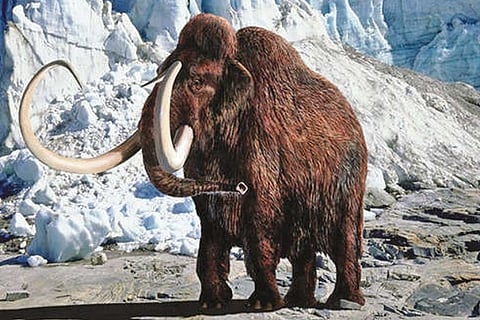

Chennai
“This is a major milestone for us,” said George Church, a biologist at Harvard Medical School, who for eight years has been leading a small team of moonlighting researchers developing the tools for reviving mammoths. “It’s going to make all the difference in the world.”
The company, which has received $15 million in initial funding, will support research in Dr. Church’s lab and carry out experiments in labs of their own in Boston and Dallas. A former researcher in Dr. Church’s lab, Eriona Hysolli, will oversee the new company’s efforts to edit elephant DNA, adding genes for mammoth traits like dense hair and thick fat for withstanding cold. The researchers hope to produce embryos of these mammoth-like elephants in a few years, and ultimately produce entire populations of the animals.
Other researchers are deeply skeptical that Colossal will pull off such a feat. And if Colossal does manage to produce baby mammoth-like elephants, the company will face serious ethical questions. Is it humane to produce an animal whose biology we know so little about? Who gets to decide whether they can be set loose, potentially to change the ecosystems of tundras in profound ways? “There’s tons of trouble everyone is going to encounter along the way,” said Beth Shapiro, a paleogeneticist at the University of California Santa Cruz and the author of “How to Clone a Mammoth.” The idea behind Colossal first emerged into public view in 2013, when Dr. Church sketched it out in a talk at the National Geographic Society.
At the time, researchers were learning how to reconstruct the genomes of extinct species based on fragments of DNA retrieved from fossils. It became possible to pinpoint the genetic differences that set ancient species apart from their modern cousins, and to begin to figure out how those differences in DNA produced differences in their bodies.
Dr. Church, who is best known for inventing ways of reading and editing DNA, wondered if he could effectively revive an extinct species by rewriting the genes of a living relative. Because Asian elephants and mammoths share a common ancestor that lived about six million years ago, Dr. Church thought it might be possible to modify the genome of an elephant to produce something that would look and act like a mammoth.
Beyond scientific curiosity, he argued, revived woolly mammoths could help the environment. Today, the tundra of Siberia and North America where the animals once grazed is rapidly warming and releasing carbon dioxide. “Mammoths are hypothetically a solution to this,” Dr. Church argued in his talk.
Today the tundra is dominated by moss. But when woolly mammoths were around, it was largely grassland. Some researchers have argued that woolly mammoths were ecosystem engineers, maintaining the grasslands by breaking up moss, knocking down trees and providing fertiliser with their droppings.
Russian ecologists have imported bison and other living species to a preserve in Siberia they’ve dubbed Pleistocene Park, in the hopes of turning the tundra back to grassland. Dr. Church argued that resurrected woolly mammoths would be able to do this more efficiently.
Zimmer writes the “Matter” column for NYT©2021
Visit news.dtnext.in to explore our interactive epaper!
Download the DT Next app for more exciting features!
Click here for iOS
Click here for Android